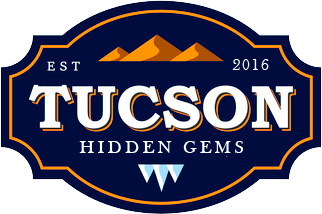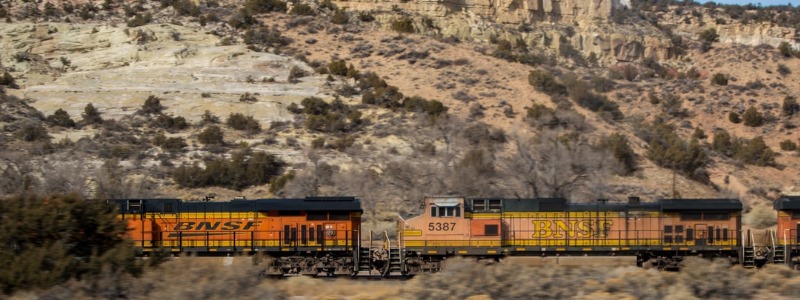History, Nature & Wide-Open Spaces Greet Visitors to the Desert
A visitor’s guide to Southeastern Arizona, celebrating the region’s fascinating folklore, Native American history, geological wonders, and desert life.
Arizona may officially be the Grand Canyon State, but that national park in the northwest corner of the state is by no means the only reason to visit in search of the Wild West. In fact, many of the most familiar images of the American Southwest—towering cacti, cowboys and ranchers, and Spanish-American heritage—are found in Arizona’s southeastern region.
Southeastern Arizona is a study in nature’s contrasts. This desert habitat receives only a few inches of rain per year but nonetheless explodes with succulent plants and colorful wildflowers in spring. Desert grasslands seem barren, only to reveal flocks of birds and herds of antelope. Many assume the Arizona desert to be a hot, unbearably dry place, but its high elevation—up to 7,000 feet—and mountainous sky islands cool the land. Two natural sites—Saguaro National Park, in Tucson, and Texas Canyon, 65 miles to the southeast in Cochise County, offer a look at Southeastern Arizona’s contrasting scenery.
In and Around Tucson
Tucson, the region’s largest city with more than a half-million people, is the gateway to southeastern Arizona (encompassed primarily by Cochise County). The city is flanked by the east and west portions of Saguaro National Park and the iconic, towering cacti can be seen everywhere—even planted in traffic islands and golf courses. Visitors can expect an extremely dry climate which results in dazzling sunshine and comfortable temperatures year-round at the region’s high desert elevation. Even in winter, daytime temps rarely dip below 60 degrees Fahrenheit, though at night, the desert loses the sun’s warmth quickly and temperatures can drop 30 degrees. In the mountain ranges scattered throughout Cochise County, known as “sky islands,” weather is wetter and cooler but still quite arid during the year.
Interstate 10 is the main east-west highway in southeastern Arizona, which runs through Tucson east toward the towns of Vail, Benson, and Willcox. Scenic U.S. 82 begins in Vail and heads south through canyons and wildlife preserves to Nogales, on the border with Mexico. Smaller U.S. 191 departs Interstate 10 between Benson and Willcox and goes south through scruffy desert grasslands dotted with yuccas, mesquite trees, and creosote bushes, terminating at Douglas, the border town adjacent to Agua Prieta, Mexico.
Saguaro National Park
Saguaro National Park is divided into two sections, with Tucson’s city center in the middle. The western section, the Tucson Mountain District, is the smaller of the two and features a living Sonoran Desert landscape against the Tucson Mountains. The much larger eastern portion, the Rincon Mountain District, is famous for its mature forests of saguaro cacti, as well as topographic variety including mountains, lowland desert, pine woodlands, and a riparian (stream-fed) valley. Together, the parks cover 91,327 acres of federally-protected land and wildlife.
For a visitor with limited time to explore the park, the Rincon Mountain District provides the most scenic bang for your buck (the park admission fee, incidentally, is ten dollars per car, five dollars for pedestrians, cyclists, and on horseback). The comprehensive visitor center offers books, brochures, and ranger-led programs about desert life. From there, Cactus Forest Drive is a paved, eight-mile loop that brings the beauty of the park, and its namesake cactus, into view. Plenty of pull-outs along with the loop offer opportunities for photography—or simply gazing at the wide-open splendor of this unique environment.
Texas Canyon
Nearer to Arizona’s border with Mexico, Texas Canyon seems like a prehistoric amusement park for early man. Located along Interstate 10 in Southeastern Arizona, visitors can tell they’ve entered the canyon when they see enormous, rounded boulders piled on top of one another in gigantic drifts. At some points, it seems possible that the slightest tremor could cause the mountain to crumble, though these formations have been essentially sedentary for thousands of years.
The rocks are comprised of many different minerals, some softer than others, and the crazy formations were created by the process of weathering. Wind and rain eroded these softer minerals faster, leaving behind fantastic shapes, especially “balancing rocks”—huge stones that appear to have been placed upon rock “pedestals” by a giant’s hand.
Texas Canyon is not a state or federal land, so there is no visitor center with information about the area’s geology. Fortunately, there is a rest stop off Interstate 10 at the head of the canyon, with ample parking and great views of the boulder formations, the Dragoon Mountain range in the near distance, and Sulfur Springs Valley below. This is the best opportunity for taking some dramatic photos. Though not as famous or officially recognized as Saguaro National Park, Texas Canyon provides a unique contrast to the well-known symbols of the Southwest.
Desert Life and Industry
Cochise County’s 6,219-square-mile expanse of desert and mountains boasts the icons of the American Southwest, from pristine natural beauty and wildlife to old mining towns and cattle ranches, to Native American heritage and incredible Mexican food at friendly roadside cafes.
At first glance, the desert may seem barren—but this region teems with nature. Statuesque saguaros, chubby barrel cactus and fuzzy chollo blanket the desert surrounding Tucson, while dazzling balanced-rock formations in Texas Canyon and the Chiricahua National Monument defy belief. Birdwatchers flock to Wings Over Willcox each January, a festival featuring birds of prey, migrating Sandhill Cranes, and hundreds of other species. Even a casual drive on one of the county’s primitive roads stirs up ravens, red-tailed hawks and Gambel’s quails. Jackrabbits, antelope, coyote and javelinas, a wild pig native to the Sonoran desert, emerge at sunset. Beginning in April, the hibernating desert comes to life with millions of scarlet California poppies, while the white blooms of the Saguaro, Arizona’s state flower, burst forth in May and June.
Precious metals like gold, silver, and copper were mined in Southeastern Arizona beginning in the 1870s, and several well-preserved towns attest to the riches once found underground. Bisbee is a gem-colored hamlet that was once “queen of the copper camps” and is now an amazing example of living history. Nearby Tombstone is more famous for its shootout at the O.K. Corral than its silver-mining past. Smaller settlements, scattered through the county, couldn’t overcome the twentieth century’s decline in mining and are now ghost towns. Today, cattle, sheep, and horse ranching have replaced mining as the region’s main industry, and it is common to see real-life cowboys in spurs and Stetsons minding the livestock.

